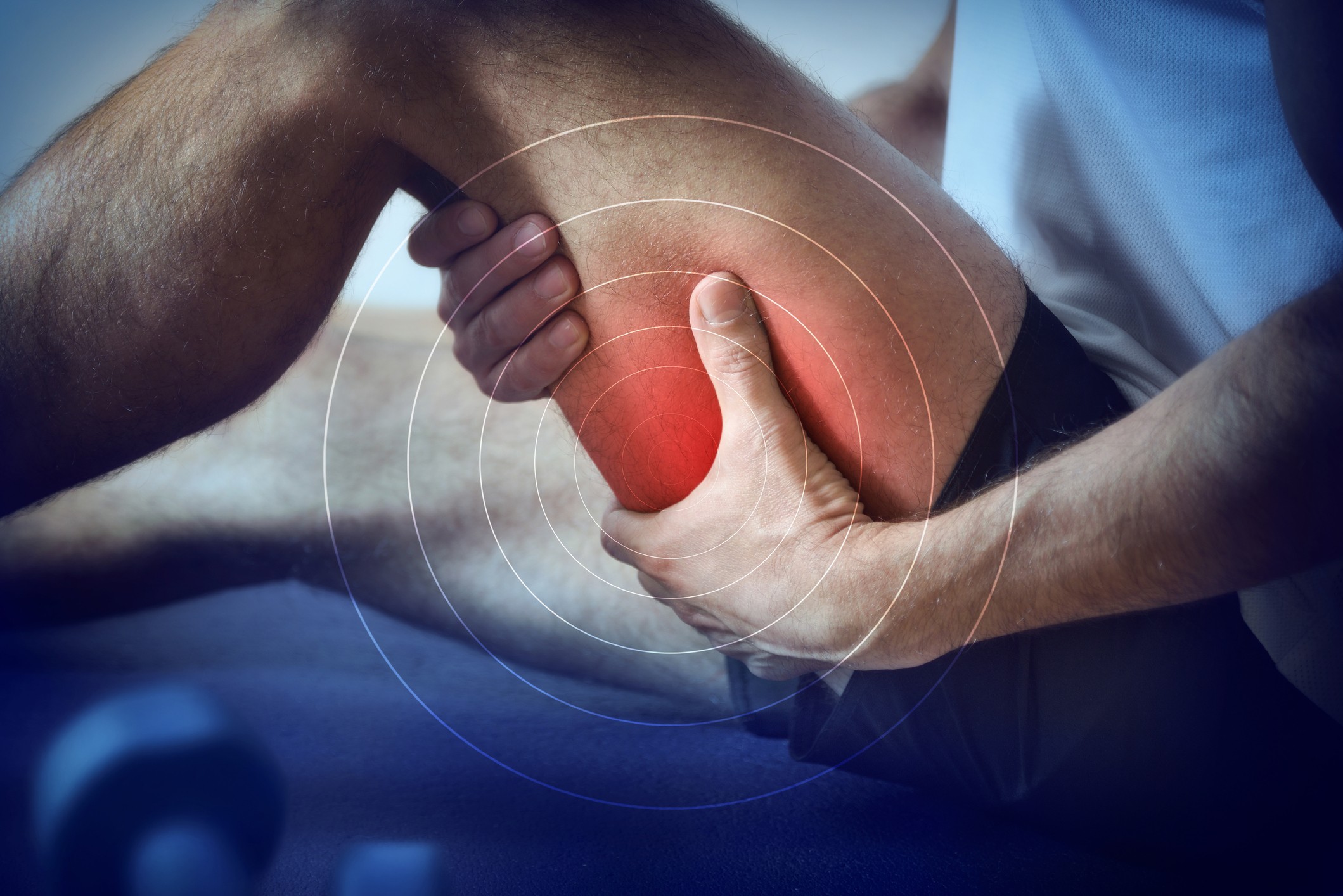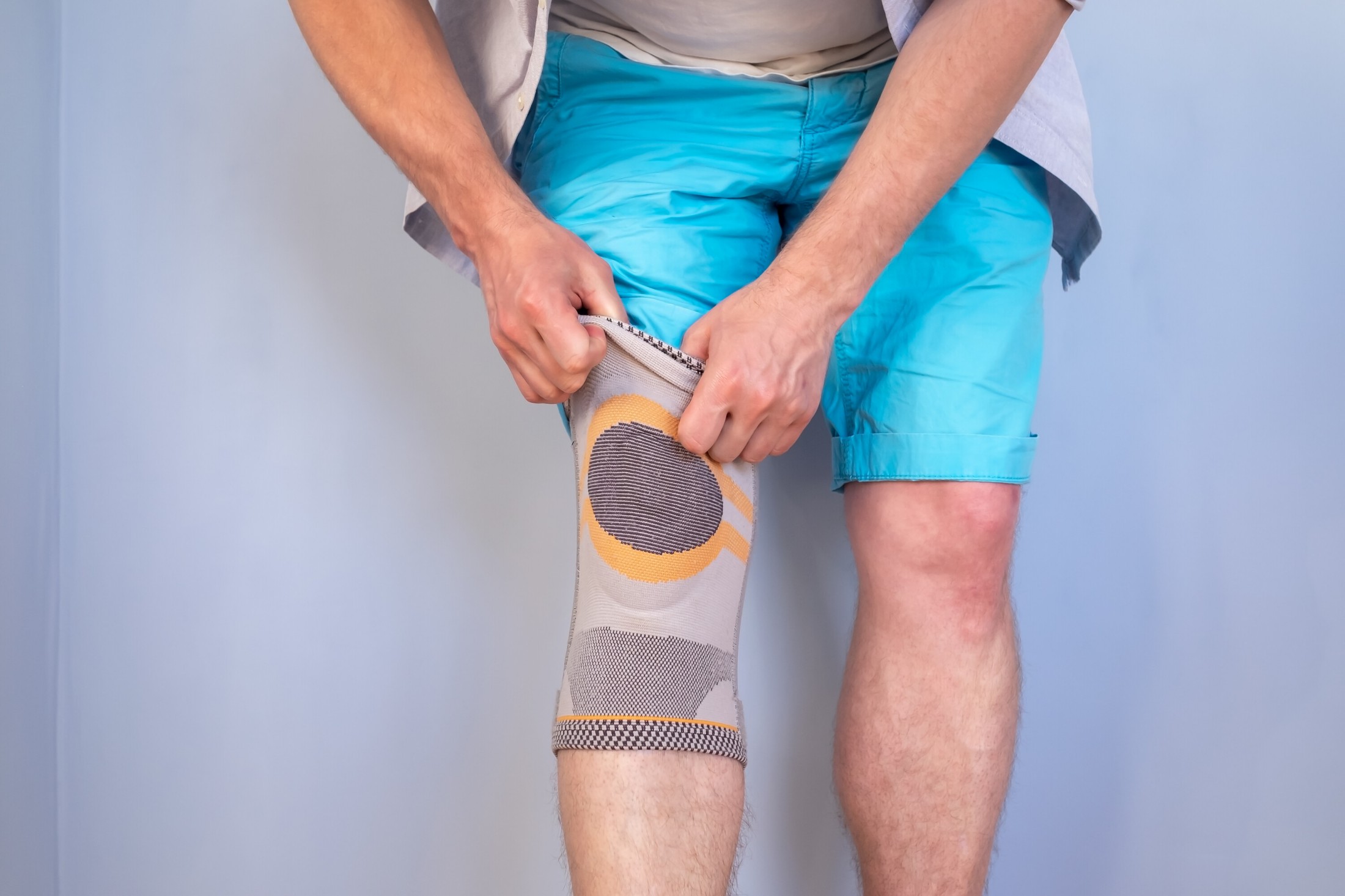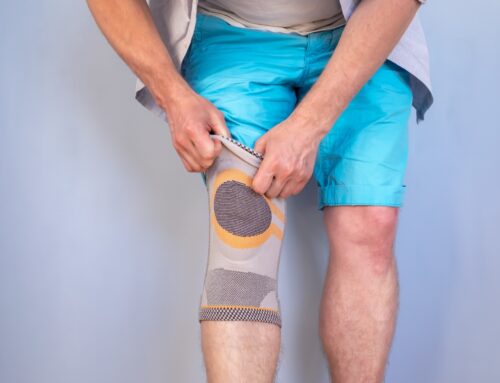For individuals dealing with persistent foot conditions like Achilles tendonitis and plantar fasciitis, finding a reliable and efficient treatment option is important. Radial Pressure Wave Therapy is an advanced, non-invasive solution, providing targeted relief for these types of chronic foot pain by addressing the root causes rather than just the symptoms.
What is Radial Pressure Wave Therapy?
Radial Pressure Wave Therapy is a non-invasive medical treatment that uses high-energy sound waves to stimulate the body’s natural healing processes. Originally developed to break down kidney stones, this technology has evolved to become a powerful tool for treating musculoskeletal issues, particularly those related to chronic pain and inflammation.
It works by delivering sound waves through a specialized device that targets areas experiencing chronic pain or inflammation. These waves penetrate deep into the tissues, increasing circulation and promoting cellular regeneration. For conditions like Achilles tendonitis and plantar fasciitis, the therapy stimulates the affected tendons and soft tissues, helping to relieve pain and improve mobility.
By sending controlled pulses to affected areas, Shockwave Treatment encourages blood flow, tissue repair, and pain relief, providing a therapeutic option for patients looking to avoid surgery or long-term medication.
Conditions Treated
Radial Pressure Wave Therapy is particularly effective for chronic foot pain and a range of other conditions, including:
- Achilles Tendonitis: Pain and inflammation in the Achilles tendon, often caused by overuse or injury.
- Plantar Fasciitis: Chronic pain in the heel and bottom of the foot due to inflammation of the plantar fascia.
- Heel Spurs: Calcium deposits that cause painful bony growths on the heel.
- Shin Splints: Pain along the shin bone, often from repetitive stress during high-impact activities.
Radial Pressure Wave vs. Traditional Therapies
Physical therapy and medication are traditional approaches that have helped many patients, but they don’t always address the underlying causes of pain or inflammation as effectively as Radial Pressure Wave Therapy.
Physical Therapy
Rehabilitation therapy focuses on strengthening muscles, improving flexibility, and restoring movement patterns that reduce strain on injured areas. It’s a widely recommended option for foot pain, particularly for conditions like plantar fasciitis, as it encourages mobility and helps prevent future injuries.
- Strengths:
- Builds strength and flexibility around the affected area, improving stability.
- Encourages long-term improvements in movement and posture.
- Provides a non-invasive approach suitable for all age groups.
- Limitations:
- Requires frequent visits over several months, which can be time-consuming.
- Effects can be gradual, requiring patient commitment to see improvements.
- While effective in building strength, it may not address chronic inflammation or deep tissue damage as effectively as Radial Pressure Wave Therapy.
Physical therapy is beneficial for those looking to support their recovery with gradual, strength-focused improvements.
Medication
Medication is often prescribed to manage pain symptoms, providing patients with immediate relief. Non-steroidal anti-inflammatory drugs (NSAIDs), for example, can reduce inflammation and discomfort, making day-to-day activities more manageable.
- Strengths:
- Provides quick relief, making it effective for managing acute pain or flare-ups.
- Easy access and can be used alongside other treatments.
- Limitations:
- Only addresses symptoms, not the underlying causes of chronic pain.
- Long-term use can lead to side effects, including dependency, stomach issues, and cardiovascular risks.
- Does not promote tissue repair or healing, meaning pain relief is temporary.
Medication can be a useful tool for short-term pain relief, it is not designed to provide long-lasting solutions for conditions like Achilles tendonitis or plantar fasciitis.
Radial Pressure Wave Therapy
Combining the benefits of both physical therapy and medication, Radial Pressure Wave Therapy provides pain relief while actively promoting healing in damaged tissues.
- Strengths
- Radial Pressure Wave Therapy offers rapid pain reduction and promotes healing at the tissue level.
- Unlike physical therapy or other long-term treatments, generally requires fewer sessions.
- Radial Pressure Wave Therapy is a non-surgical option that requires no anesthesia or lengthy recovery time, making it a practical choice for patients seeking results without invasive procedures.
- With long-lasting results, fewer required sessions, and no need for ongoing prescriptions.
- Limitations
- Radial Pressure Wave Therapy is most effective for chronic pain and inflammation rather than acute injuries. Patients with new or recent injuries may require other treatments initially.
- Although typically well-tolerated, some patients may experience mild discomfort during treatment, especially in sensitive areas. This sensation usually subsides quickly.
- May be less beneficial for conditions that do not involve inflammation or tissue damage.
Shockwave is an effective alternative treatment for pain, especially with advanced technology like the Swiss DolorClast Smart20. Fewer RSWT sessions are needed for noticeable relief, offering a faster and more convenient path to recovery compared to traditional methods.
Benefits of Swiss DolorClast Smart20
The Swiss DolorClast Smart20 represents a breakthrough in Radial Pressure Wave Therapy technology, setting new standards for precision, efficiency, and patient comfort. Designed to deliver highly targeted treatment, this device has transformed how chronic foot pain conditions, such as Achilles tendonitis and plantar fasciitis, are managed. With cutting-edge engineering, the Swiss DolorClast Smart20 optimizes treatment outcomes, helping patients experience relief faster and more effectively than with traditional devices.
High Precision and Strength
The Swiss DolorClast Smart20 is engineered with advanced technology that enhances its precision and power, making it one of the most effective devices for Radial Pressure Wave Therapy available today.
Its high-frequency waves penetrate deep into tissues with pinpoint accuracy, targeting the exact areas of pain or inflammation. This precision allows it to stimulate the body’s natural healing processes more effectively than other devices, ensuring that energy is delivered only where it is needed, without affecting surrounding areas.
Reduced Treatment Time
One of the Swiss DolorClast Smart20’s most significant advantages is its efficiency. Where standard Radial Pressure Wave Therapy devices may require 8-10 sessions to achieve full results, the Smart20 delivers effective outcomes in just 3-4 sessions.
This reduction in the number of treatments saves patients time and reduces the overall cost of therapy, making it a more convenient and accessible option for those looking to alleviate foot pain quickly.
Swiss DolorClast Smart20 vs. Other Machines

- The Smart20’s advanced mechanics ensure that each pulse targets the exact area of pain or inflammation, allowing for focused treatment that optimizes healing.
- Patients experience relief in fewer sessions, often seeing improvements after just one or two treatments.
- Engineered for patient comfort, the Swiss DolorClast Smart20’s technology reduces the sensation of pain during treatment, making each session more tolerable.
Comparison with Other Radial Pressure Wave Therapy Machines
To understand the benefits of the Swiss DolorClast Smart20, it’s helpful to compare it with other, more conventional Radial Pressure Wave Therapy devices.
| Feature | Swiss DolorClast Smart20 | Other Radial Pressure Wave Therapy Machines |
|---|---|---|
| Sessions Required | 3-4 sessions | 8-10 sessions |
| Precision | High-precision targeting for accurate treatment | Broader targeting, less precise |
| Patient Comfort | Minimal discomfort due to advanced technology | Moderate discomfort, sometimes higher |
| Recovery Time | Faster due to efficient energy delivery | Slower, requiring more frequent visits |
| Effectiveness | High, with faster relief and long-term benefits | Moderate, with slower relief and more frequent treatments |
The Swiss DolorClast Smart20’s ability to reduce session requirements by half or more is a major advantage for patients, making the treatment process more convenient and cost-effective over time.
Is Radial Pressure Wave Therapy Right for Your Condition?
Radial Pressure Wave Therapy is highly effective for treating various chronic foot pain conditions and can be an excellent option for those seeking non-invasive relief. However, it’s essential to understand which specific conditions respond best to this therapy and when it’s time to consult a professional for a treatment assessment.
Conditions Best Suited for Radial Pressure Wave Therapy
Radial Pressure Wave Therapy is particularly beneficial for chronic pain conditions that involve inflammation, tendon strain, or tissue damage. The following conditions are well-suited for Shockwave Therapy and can often see significant improvements:
- Achilles Tendonitis
Chronic inflammation of the Achilles tendon, typically caused by overuse or repetitive strain, responds well to Radial Pressure Wave Therapy by stimulating tissue repair and reducing inflammation. - Plantar Fasciitis
A common cause of heel pain, plantar fasciitis is the result of inflammation in the thick band of tissue running across the bottom of the foot. Radial Pressure Wave Therapy helps alleviate pain and promote healing, often with faster results than traditional treatments. - Heel Spurs
These bony growths on the heel can cause persistent discomfort, especially with standing or walking. Radial Pressure Wave Therapy can target the area around the spur, helping to reduce inflammation and associated pain. - Shin Splints
Radial Pressure Wave Therapy is effective in reducing the inflammation and pain caused by shin splints, often seen in runners and individuals engaging in high-impact activities. - Tendinopathies
Various tendon-related issues, including chronic tendinitis, benefit from Radial Pressure Wave Therapy’s ability to stimulate collagen production and improve tendon resilience.
When to Consult Care-Med for a Treatment Assessment
If you’re dealing with persistent foot pain that hasn’t improved with rest, stretching, or other conservative treatments, it may be time to consult Care-Med for a treatment assessment.
Shockwave Therapy is particularly recommended for individuals who:
- Have Chronic Pain
If pain has persisted for more than three months and disrupts daily activities, Shockwave Therapy could provide effective relief. - Want a Non-Surgical Option
Shockwave Therapy offers a non-invasive alternative to surgery, ideal for those looking to avoid lengthy recovery times. - Have Tried Other Treatments Without Success
For individuals who have undergone physical therapy or medication with limited results, Shockwave Therapy can provide targeted relief that other treatments may not. - Need Faster Recovery
Shockwave Therapy’s ability to deliver results in just 3-4 sessions makes it a time-efficient option for those looking to return to normal activities sooner.
At Care-Med, we combine our dedication to ethical practices with cutting-edge technology, such as the Swiss DolorClast Smart20, to offer a treatment experience focused on effective, long-lasting results. Our approach prioritizes patient well-being, ensuring that every treatment is both safe and tailored to individual needs.
If you’re ready to explore a treatment that addresses the root cause of your pain and supports genuine healing, consider scheduling a consultation with our experienced team.
Share This Story, Choose Your Platform!
Table of Contents
We specialize in orthotics, body braces, and compression wear tailored to your unique needs in Toronto. Reach out to us at info@caremed.care or call 416-782-5353 to book your fitting and consultation.
Experience the difference of customized solutions designed just for you.











